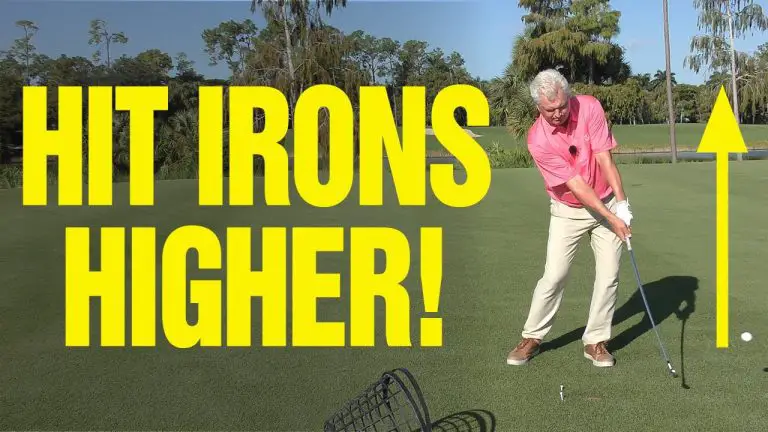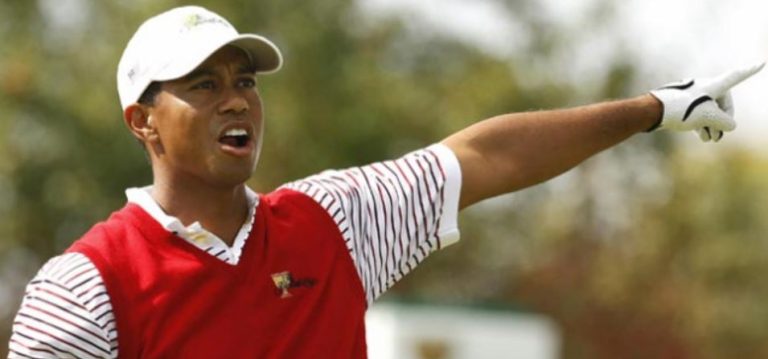How To Hit A 30 Yard Pitch Shot

The ability to hit precise pitch shots is a crucial skill that can make a significant difference in your golf game. Whether you find yourself just off the green or faced with a short approach shot, having the confidence to hit a 30-yard pitch shot can save you valuable strokes and improve your overall scoring. In this comprehensive guide, we will dive into the techniques, strategies, and tips that will help you master the art of hitting a 30-yard pitch shot with precision and consistency.
The 30-yard pitch shot is a delicate and finesseful shot that requires a combination of skill, touch, and control. It’s a shot that allows you to navigate various obstacles, such as bunkers, slopes, and tight pin positions, with finesse and accuracy. By understanding the key principles and implementing the proper technique, you can confidently approach these situations and execute successful 30-yard pitch shots.
Throughout this guide, we will break down the fundamental elements of hitting a 30-yard pitch shot, starting with grip, setup, and stance. We’ll then delve into the technique, swing mechanics, and body alignment necessary to execute the shot effectively. We’ll discuss how to control distance and trajectory, offering tips on how to adjust swing length, clubface angle, and ball position. Additionally, we’ll explore practice drills and strategies to help you refine your skills and gain confidence in your 30-yard pitch shots.
Whether you’re a beginner looking to establish a solid foundation or an experienced golfer aiming to fine-tune your technique, this guide is designed to provide you with the knowledge and tools needed to hit successful 30-yard pitch shots. So, let’s get started and unlock your potential to excel in this crucial aspect of your short game.

Understanding the Fundamentals of Pitch Shots
Before we dive into the specifics of hitting a 30-yard pitch shot, let’s establish a solid foundation by understanding the key fundamentals. Grip, setup, and stance play crucial roles in executing accurate and controlled pitch shots. By mastering these basics, you’ll set yourself up for success in hitting consistent and effective shots around the green.
To begin, let’s explore the proper grip for pitch shots. The grip is your connection to the club and has a significant impact on your ability to control the clubface throughout the swing. A proper grip promotes a neutral clubface position and allows for a fluid and controlled swing motion. Experiment with different grip techniques to find the one that feels comfortable and provides optimal control.
Next, let’s discuss the setup for pitch shots. Proper setup involves aligning your body to the target, positioning the ball correctly in your stance, and adopting a balanced and athletic posture. These elements ensure that you have a solid foundation and enable you to make crisp contact with the ball.
Additionally, your stance plays a crucial role in pitch shots. A slightly narrower stance with your feet shoulder-width apart provides stability and allows for a proper weight transfer during the swing. Experiment with different stance widths to find the one that suits your comfort and promotes a stable and balanced swing.
By understanding and practicing these fundamental aspects of grip, setup, and stance, you’ll develop a strong foundation for hitting effective 30-yard pitch shots. Now let’s move on to assessing the lie and shot selection.
Assessing the Lie and Shot Selection
Before hitting a pitch shot, it’s essential to assess the lie and consider the various factors that will influence your shot selection. Different lies require different techniques and shot choices to maximize your chances of success. Let’s explore how to assess the lie and make informed shot selections for 30-yard pitch shots.
One crucial factor to consider is the lie of the ball. Is it sitting up nicely on a fluffy lie, or is it nestled down in thick grass? The lie will dictate the type of shot you can comfortably execute. For example, on a tight lie where the ball is sitting close to the ground, a bump-and-run shot with a lower trajectory may be more suitable. On the other hand, if the ball is sitting up in a fluffy lie, you may opt for a higher lofted shot with more spin.
Additionally, consider the position of the pin and the desired trajectory of your shot. Are you aiming to land the ball softly on the green or release it towards the pin? Assessing these factors will help you determine the appropriate shot selection and the level of precision required.
In the next section, we’ll discuss club selection for 30-yard pitch shots and explore the different options available to you based on the specific shot requirements.
Club Selection for 30-Yard Pitch Shots
Choosing the right club for a 30-yard pitch shot is crucial for achieving the desired distance and trajectory. Let’s explore the club options and their attributes to help you make informed decisions.
When it comes to club selection for pitch shots, wedges are often the preferred choice due to their loft and versatility. The most commonly used wedges for 30-yard pitch shots are the pitching wedge, gap wedge, or sand wedge. These clubs provide the loft necessary to elevate the ball and control its trajectory effectively.
The pitching wedge is a reliable option for 30-yard pitch shots, as it offers a balance between loft and distance. It allows you to generate enough height to carry the ball over obstacles and land it softly on the green. The pitching wedge is a go-to club for many golfers in a variety of situations around the green.
If you need a bit more loft and control, the gap wedge can be a valuable addition to your club selection. With a slightly higher loft than the pitching wedge, it allows you to hit higher shots with more spin, giving you added stopping power on the green. The gap wedge is particularly useful when you need to clear obstacles or navigate tight pin positions.
Another option is the sand wedge, which has even more loft than the pitching and gap wedges. The extra loft of the sand wedge allows you to hit higher, softer shots with significant backspin. This is especially beneficial when you’re faced with short-sided shots or need to carry the ball over a bunker.
Ultimately, the choice of club for a 30-yard pitch shot depends on the specific circumstances and your personal preference. It’s essential to spend time practicing with different wedges to understand how they perform and how they affect the ball’s trajectory and distance.
Now that we have covered the fundamental aspects of grip, setup, stance, shot selection, and club options, let’s delve into the technique and execution of a 30-yard pitch shot.
Mastering the Technique: Swing Mechanics and Body Alignment
Executing a successful 30-yard pitch shot requires proper swing mechanics and body alignment. Let’s break down the key components of the swing and discuss how to align your body for optimal contact and control.
- Address the Ball: Begin by positioning the ball slightly back in your stance, closer to your trailing foot. This promotes a steeper angle of attack, helping you strike down on the ball and achieve a clean contact.
- Open Stance and Alignment: Open your stance slightly by aligning your feet left of the target (for right-handed golfers). This encourages an outside-to-inside swing path, which can help create the desired backspin and control. Align your shoulders and hips parallel to the target line to maintain proper body alignment.
- Controlled Backswing: Take the club back with a smooth and controlled motion, ensuring that your wrists remain firm and your arms swing in sync with your body. Focus on maintaining a consistent tempo and avoid any excessive wrist movement.
- Steady Downswing and Impact: As you initiate the downswing, shift your weight onto your front foot while maintaining a steady tempo. Keep your hands ahead of the clubhead at impact to ensure a downward strike on the ball. Maintain a relaxed grip and a slightly descending angle of attack to promote clean contact.
- Follow-Through and Finish: Allow your body to rotate through the shot, maintaining a balanced and controlled follow-through. Your weight should transfer to your front foot, and your chest and belt buckle should face the target. A full and balanced finish indicates a well-executed pitch shot.
By practicing these swing mechanics and focusing on proper body alignment, you’ll develop the consistency and control needed to hit accurate and effective 30-yard pitch shots.
In the next section, we’ll discuss techniques for controlling the distance and trajectory of your pitch shots to better dial in your desired yardage.
Controlling Distance and Trajectory
Having the ability to control the distance and trajectory of your pitch shots is essential for precise shot-making. Let’s explore some techniques and adjustments you can make to achieve the desired results.
- Swing Length: Adjusting the length of your swing can influence the distance the ball travels. Shorten your backswing for shorter shots and lengthen it for slightly longer shots. Experiment with different swing lengths to find the right balance and achieve consistent distances with your 30-yard pitch shots.
- Clubface Angle: The clubface angle at impact plays a significant role in determining the trajectory of the ball. To hit a higher shot, open the clubface slightly at address and maintain that angle through impact. Conversely, to hit a lower shot, close the clubface slightly. Experiment with different clubface angles to achieve the desired trajectory for your 30-yard pitch shots.
- Ball Position: The position of the ball in your stance can affect both the distance and trajectory of your pitch shots. Placing the ball slightly back in your stance promotes a more downward strike, resulting in a lower ball flight with increased spin. Conversely, placing the ball slightly forward in your stance can help produce a higher ball flight with less spin. Experiment with ball position to find the setup that produces the desired results.
- Swing Tempo: Maintaining a consistent and controlled tempo throughout your pitch shot is crucial for distance control. A smooth and rhythmic swing allows for better timing and helps you gauge the necessary power to hit the ball the desired distance. Practice swinging with a consistent tempo to improve your distance control on 30-yard pitch shots.
By incorporating these techniques into your practice sessions and experimenting with different variables, you’ll develop the ability to control the distance and trajectory of your 30-yard pitch shots with greater precision.
Practicing and Refining Your 30-Yard Pitch Shots
As with any aspect of golf, practice is key to refining your skills and gaining confidence in your 30-yard pitch shots. Here are some practice tips to help you improve your performance:
- Target Practice: Set up targets at different distances around the practice green and work on hitting 30-yard pitch shots to those targets. This will help you develop a sense of distance and accuracy and fine-tune your ability to hit the ball consistently from 30 yards.
- Varying Lies and Conditions: Practice your 30-yard pitch shots from a variety of lies and conditions, including uphill lies, downhill lies, and different types of grass. This will prepare you for different situations on the course and help you adapt your technique accordingly.
- Track and Assess: Keep track of your shots during practice sessions and assess your results. Take note of any patterns or inconsistencies in your ball flight and adjust your technique accordingly. This self-awareness will allow you to make necessary improvements and enhance your performance.
- Visualize and Replicate: Before each pitch shot, visualize the desired trajectory and landing spot. Then, try to replicate that visualization in your swing. This mental imagery can enhance focus and consistency, leading to more accurate shots.
- Practice Under Pressure: Incorporate pressure situations into your practice routine. Create games or challenges where you have to execute precise 30-yard pitch shots under a bit of pressure. This will simulate on-course scenarios and help you develop the ability to perform under challenging conditions.
Remember, practice is a continual process, and refining your 30-yard pitch shots will take time and effort. Be patient with yourself and maintain a positive mindset as you work towards improving this essential aspect of your short game.
Conclusion
Mastering the 30-yard pitch shot is a valuable skill that can significantly enhance your scoring ability and overall confidence on the golf course. By understanding the fundamentals, assessing the lie, selecting the appropriate club, mastering the technique, and practicing with purpose, you’ll be on your way to hitting accurate and controlled 30-yard pitch shots.
Take the time to develop a consistent and repeatable swing, experiment with different variables, and practice in varying conditions. With dedication and practice, you’ll gain the confidence and skill needed to confidently execute 30-yard pitch shots and become a more well-rounded golfer.






